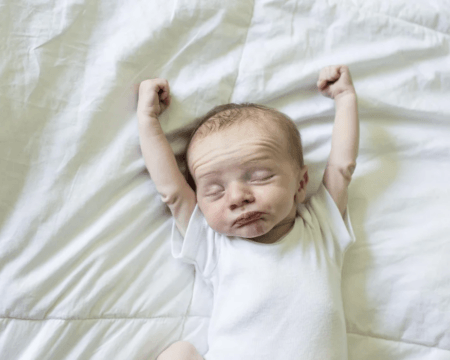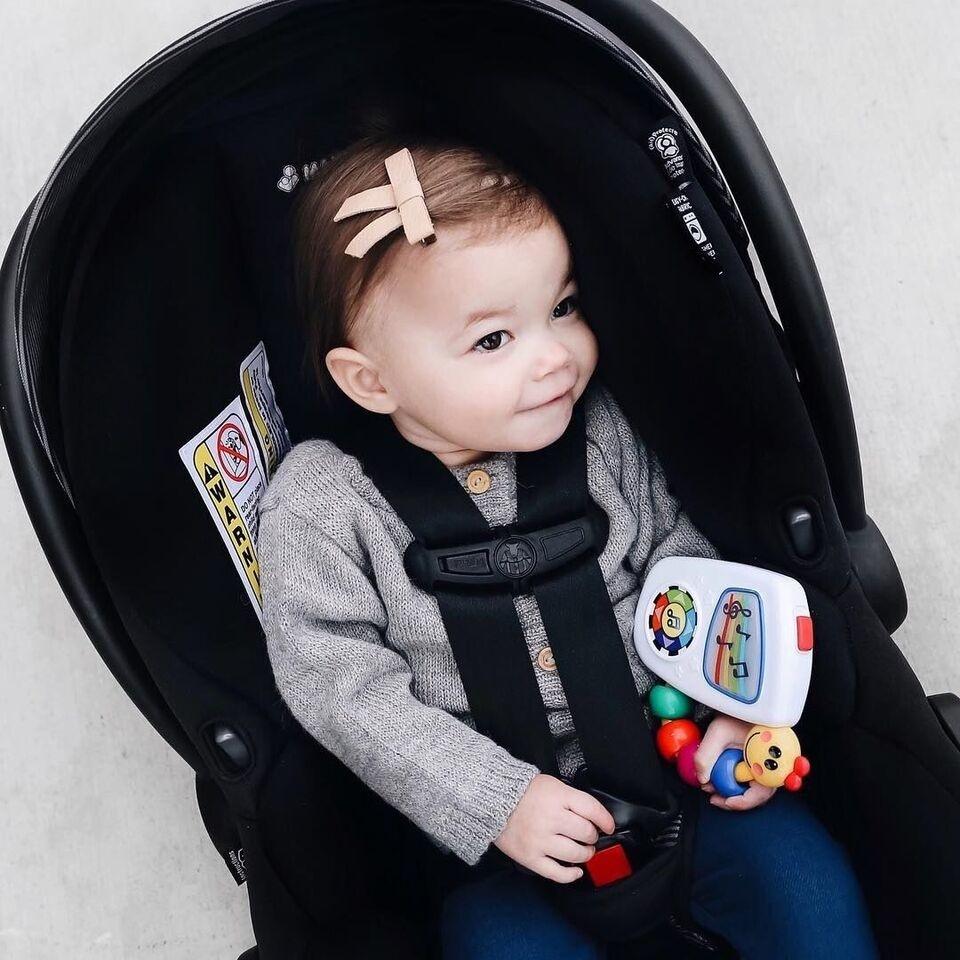10 safe sleep guidelines every parent, grandparent and caregiver should know
So you can rest a little easier, mama.

In This Article
- Place baby on a firm surface in a crib or bassinet
- Put your baby on their back
- Set the appropriate temperature in the room
- Make sure baby has their own separate sleeping space
- Do not expose your baby to smoke
- Use a monitor if they're sleeping in another room
- Feed your baby in a position that isn't too relaxing for you
- Use a pacifier and/or breastfeed if possible
- Have carbon monoxide and smoke detectors nearby
- Don't let your baby sleep in an area with animals
- A note from Motherly
If you’ve ever stood over your baby’s crib or clung to the monitor watching them as they slept, you’re not alone, mama. Making sure your baby is safe while they sleep is one of the top concerns for parents, and often leads to our own sleepless nights as we struggle to relax while our baby snoozes. But you need your sleep, too.
Here are 10 safe sleep guidelines to keep in mind so you can rest a little easier:
Place baby on a firm surface in a crib or bassinet
Although your baby has the capability of falling asleep pretty much anywhere as a newborn, it is strongly recommended by the American Academy of Pediatrics (AAP) that all sleep happens in a crib with a firm mattress or in a bassinet. Other than a fitted sheet, nothing else should be in the crib, especially for newborns. By placing your baby on their back on a firm surface, you will greatly reduce the risk of SIDS.
If your baby falls asleep in their carseat, stroller, swing or sling, be sure to move them to a firm sleep surface as soon as possible.
Put your baby on their back
This is the safest position for your baby to sleep until they learn to roll over on their own. Once your baby has the ability to completely roll over, it is OK to allow them to remain in that position for sleep, but you should still put them down to sleep on their back to begin with. It’s fine to swaddle your baby, but make sure they’re placed on their back when swaddled, and when they start working to roll over, you’ll need to stop swaddling.
Set the appropriate temperature in the room
You may have the urge to over-bundle your little one, especially in the winter months, but as long as the temperature in the room is between 68 to 72-degrees Fahrenheit, there is no need to layer them in excessive clothing. Long-sleeve sleepwear with light socks is all they need to stay warm.
Make sure baby has their own separate sleeping space
Although there are strong opinions on both sides of this subject, research has found that sharing a bed with a baby can put them at risk for SIDS. The AAP recommends parents and babies room-share for the first 6 to 12 months of life, but not bed-share. The same goes for sleeping on a couch or other soft surfaces during the day. If you want your baby close to you, you can keep the crib or bassinet next to your bed.
Do not expose your baby to smoke
Smoking is one of the major contributing risks of SIDS and even small particles on your clothing can be passed to your baby. Children should especially not be sleeping in an environment where there are particles of smoke in the air. This is something that should be considered when traveling and staying in hotels or homes of friends and family members as well.
Use a monitor if they’re sleeping in another room
The use of a baby monitor not only gives you peace of mind but can help ensure your baby remains safe while sleeping. While you don’t need to worry over every little sound they make, there will be situations when you need to go in the room and do a safety check based on what you see or hear in the monitor.
Feed your baby in a position that isn’t too relaxing for you
This is one that might seem odd as you want to be comfortable as you feed the baby, especially if you are exhausted. However, it is best to avoid any situation where you might potentially fall asleep. For example, sitting in an upright position in a chair versus laying in your bed can help you stay more alert.
Babies should also never be allowed to fall asleep in a nursing pillow or pillow lounger, as this position might encourage their heads to fall forward, putting pressure on the airway.
Use a pacifier and/or breastfeed if possible
There are numerous reasons why a mama might not be able—or want—to breastfeed, but if you do have the capability of doing so, it has been found as a way to decrease the risk of SIDS.
Similarly, if your child will take a pacifier, this is a great way to not only soothe them but also to prevent SIDS. I also highly encourage feeding your child as much as needed during the first few months of life. This doesn’t necessarily mean you need to feed them every time they wake, but if they seem genuinely hungry, it is safest not to stretch them too long in between feeds.
Have carbon monoxide and smoke detectors nearby
You’d be surprised how many homes don’t have these installed or installed correctly. Regularly check the batteries in both devices and make sure they are working properly throughout the home so you’d be notified if something happened.
Don’t let your baby sleep in an area with animals
I know this one can be tough, especially if your pets were your first babies, but as much as we love them and as gentle as we think they are, limit the risk. A cat or dog could accidentally suffocate your baby if they have access to their crib/bassinet, or their fur could cause them to have trouble breathing.
A note from Motherly
These safety guidelines are not meant to induce fear or cause excessive worrying, but rather serve as tools and knowledge that will ensure baby’s sleep is as safe as possible.
A version of this post was originally published on December 18, 2018. It has been updated.


